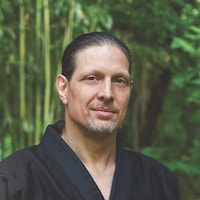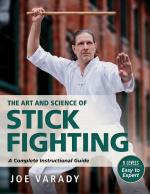For maximum effectiveness, your self-defense training needs to be specific and aimed toward helping you achieve the immediate goals of escaping to safety. It begins by being mindful of why and how you are training. While training in the martial arts or for competition in combat sports can aid you in a self-defense situation, it does not prepare you for certain aspects that are unique to self-defense.
Before I go any further, I’d like to state that it is not my intention to denigrate the martial arts or combat sports. Each has its value, and I am personally heavily invested in, and have a great affinity for, both. I have literally dedicated my life to teaching and training in the martial arts, and my record shows that I obviously enjoy participating in combat sports. However, martial arts, combat sports, and self-defense are different realms, and, while interconnected, they are not entirely the same.

Combat Sports
Combat sports such as mixed martial arts (MMA), boxing, kickboxing, jujitsu, and sport eskrima are games of consensual violence in which participants test their abilities against comparably skilled fighters. Each sport is unique and focuses on its own specific skill set that is taught and learned systematically, practiced repeatedly over time, and then tested by its participants in highly structured situations, contests, and mock fights. These structured tests occur within agreed-upon boundaries in both time and space and are regulated by a predetermined set of rules. Since the focus in these matches is winning by physically dominating your opponent, combat sports usually appeal most to the fittest and more athletically inclined among us. These people dedicate countless hours to developing and honing their athleticism and abilities. Learning, practicing, and using self-defense skills, on the other hand, is quite different. Self-defense skills have to be easily learned and implemented in a wide variety of circumstances by ordinary people with a minimal amount of training.
While the skills gained from training in combat sports can be used effectively in self-defense, combat sports also have the potential to ingrain attributes that have the potential to actually work against you on the street. Combat sports foster an aggressive mind-set in which you set out to physically dominate another person, unlike self-defense that prioritizes avoiding physical encounters altogether. In self-defense you engage a threat only when necessary to ensure your own personal safety or that of another.
Combat sports occur in a relatively safe, controlled environment and progress like a game of physical chess. If at any time you find yourself in a dangerous position, there are rules to ensure your safety, and you always have the option of stopping the action by tapping or bowing out.
Self-defense, on the other hand, is not a competition match. There are no referees and no rules, as well as no option to tap or bow out. If it is necessary to physically resist, you may have to employ methods that are unfair to your attacker, or, in other words, cheat. Combat sports, on the other hand, condition you to fight in a particular fashion and to abide by a certain set of rules. The reality is that you are going to fight the way you train. Therefore, for self-defense, you need to train the way you’ll have to fight.
Martial Arts
While many martial arts schools also claim to prepare their students for self-defense, this may only partially be true. The primary goal of most traditional martial arts styles has changed in the last century from self-protection to self-perfection. This shift is especially evident in those arts ending with the suffix -do. The suffix “-do” in words like judo, karate-do, and aikido indicate that these arts emphasize a path of personal development over jitsu, or raw fighting technique. This is not necessarily a bad thing. We live in an era where people train in the martial arts for a wide variety of reasons besides self-defense: to develop discipline, for callisthenic exercise, to build strength or relieve stress, and to develop coordination, among others.
Training in most martial arts will help you in self-defense because they help you develop many attributes and abilities that can be great assets in a physical confrontation. The missing component is usually the pressure testing of techniques. The martial arts are only validated if they can produce reliable results demonstrating that the techniques can be successfully applied by a wide range of people in high-stress situations simulating, as closely as possible, the conditions under which actual self-defense would have to be used. Therefore, students need to regularly practice applying their skills against noncompliant attackers under progressively greater levels of resistance. Only then can students develop the neural pathways, or muscle memory, required to perform the same techniques successfully under stress. While there are some martial arts schools that do engage in regular pressure testing of their self-defense techniques, the unfortunate reality is that most do not.
Self-Defense
Self-defense is the use of reasonable force to protect yourself from bodily harm resulting from an attack by an aggressor. Self-defense is not fighting in terms of pitting your skills against another. Since proper perspective is critical to good decision-making, this distinction becomes a very important one to make.
Complex and sophisticated combat systems take years to learn. Self-defense is most effective when it is based on instinctual movements that are easy to remember and utilize with little training. If techniques are based on your body’s natural reactions, almost anyone can learn practical and effective self-defense techniques that increase their likelihood of survival in a relatively short period of time.
Learning self-defense can be surprisingly empowering. Additional benefits gained from training include an increased sense of calmness and self-confidence as a result of facing and overcoming your fears. This, in turn, can improve your life by giving you a more positive, non-defeatist attitude. This increased confidence alone can reduce your chances of becoming a victim.
The above is an excerpt from The Art and Science of Self Defense: A Comprehensive Instructional Guide by Joe Varady, Publication Date June 1, 2022, YMAA Publication Center, ISBN: 9781594398728.






